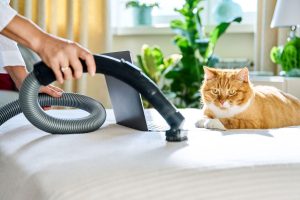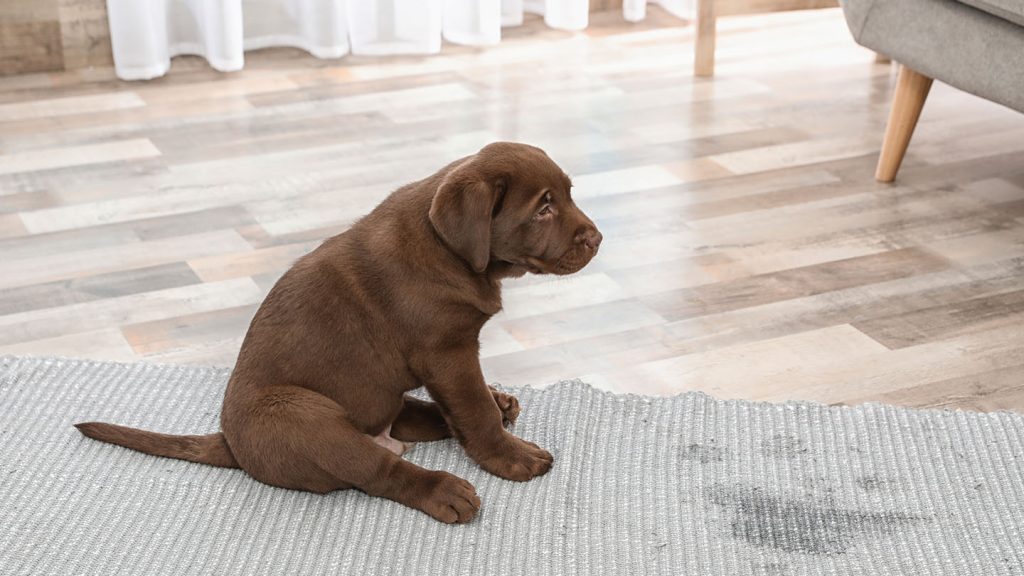Having multiple pets in a home brings joy and companionship, but it also comes with challenges, especially when it comes to maintaining cleanliness. Pet stains and lingering odors can become persistent issues, affecting the comfort and freshness of a living space. Managing these problems requires a combination of proactive habits, effective cleaning techniques, and an understanding of the underlying causes of stains and odors.
Understanding the Causes of Pet Stains and Odors
 Pet accidents can happen for various reasons, including behavioral issues, health conditions, or simple excitement. Urine, vomit, and feces are the most common sources of stains, and if not treated properly, they can lead to long-lasting odors that become difficult to remove. The composition of pet urine, in particular, changes over time, making it more challenging to clean once it has settled into carpets, upholstery, or flooring.
Pet accidents can happen for various reasons, including behavioral issues, health conditions, or simple excitement. Urine, vomit, and feces are the most common sources of stains, and if not treated properly, they can lead to long-lasting odors that become difficult to remove. The composition of pet urine, in particular, changes over time, making it more challenging to clean once it has settled into carpets, upholstery, or flooring.
Odors are another major concern in homes with multiple pets. The natural scent of animals, combined with occasional accidents, can create an unpleasant atmosphere. These smells often become embedded in fabrics, rugs, and even walls if not addressed properly. Understanding what contributes to these issues is the first step toward implementing an effective cleaning strategy.
Choosing the Right Cleaning Products
When tackling pet stains and odors, selecting the appropriate cleaning products is essential. Many conventional household cleaners may mask smells temporarily but fail to remove the source of the problem. Enzyme-based cleaners are particularly effective because they break down the organic matter in pet waste, eliminating both stains and lingering odors. These cleaners are designed to neutralize the compounds in urine and other biological waste rather than just covering them up.
It is also important to avoid cleaners that contain ammonia, as they can actually worsen the problem. Since ammonia is a component of urine, its scent may encourage pets to revisit the same spot. Instead, opting for natural solutions like vinegar and baking soda can provide a safer and more effective way to clean. However, it is crucial to test any cleaning solution on a small area before applying it widely to ensure it does not damage fabrics or flooring.
Addressing Accidents Immediately
Timely intervention is key to preventing stains from setting in and odors from becoming permanent. When an accident occurs, absorbing as much of the liquid as possible before cleaning is crucial. Using paper towels or a clean cloth to blot—rather than rub—prevents the stain from spreading further into carpets or fabrics. After blotting, applying an enzyme cleaner and allowing it to work for the recommended time helps break down the stain at a molecular level.
For solid waste, carefully removing as much as possible before applying a cleaning solution ensures better results. Once cleaned, ensuring the area is thoroughly dried helps prevent mold and mildew growth, which can contribute to additional odors.
Deep Cleaning Carpets and Upholstery
In homes with multiple pets, regular deep cleaning is necessary to maintain a fresh environment. Carpets, rugs, and upholstery tend to absorb pet-related odors over time, making it essential to use steam cleaning or professional-grade carpet cleaners periodically. Steam cleaning can help lift embedded dirt, pet hair, and residual stains, restoring the freshness of the fabric.
In addition to professional cleaning, regular vacuuming with a pet-friendly vacuum cleaner helps control hair buildup and dander, which contribute to unwanted smells. Using vacuum attachments to clean furniture, curtains, and pet bedding also reduces the accumulation of allergens and odors in the home.
Managing Persistent Odors
Even after cleaning, some odors can linger, especially in homes with multiple pets. Ensuring proper ventilation by opening windows and using air purifiers helps improve air quality. Activated charcoal and baking soda can be placed in key areas to absorb unwanted smells naturally.
Washing pet bedding, blankets, and any fabric they frequently use on a regular basis further reduces odors. Additionally, grooming pets regularly prevents excessive shedding and minimizes the spread of oils and dander that can contribute to persistent smells.

Preventing Future Stains and Odors
Beyond cleaning up accidents, taking preventive measures helps reduce the recurrence of pet stains and odors. Training pets to use designated bathroom areas, whether outdoors or on a litter pad, minimizes the risk of accidents indoors. Providing pets with a consistent routine and regular bathroom breaks helps reinforce good habits.
Using pet-friendly furniture covers, washable rugs, and easy-to-clean flooring materials makes maintaining cleanliness easier. Keeping water-resistant mats near litter boxes or pet feeding areas prevents spills from seeping into carpets or hardwood floors.
Additionally, paying attention to a pet’s diet and hydration levels can reduce the likelihood of digestive issues that contribute to frequent accidents. Addressing any health concerns through regular vet visits ensures that underlying medical conditions do not cause increased urination or vomiting.

